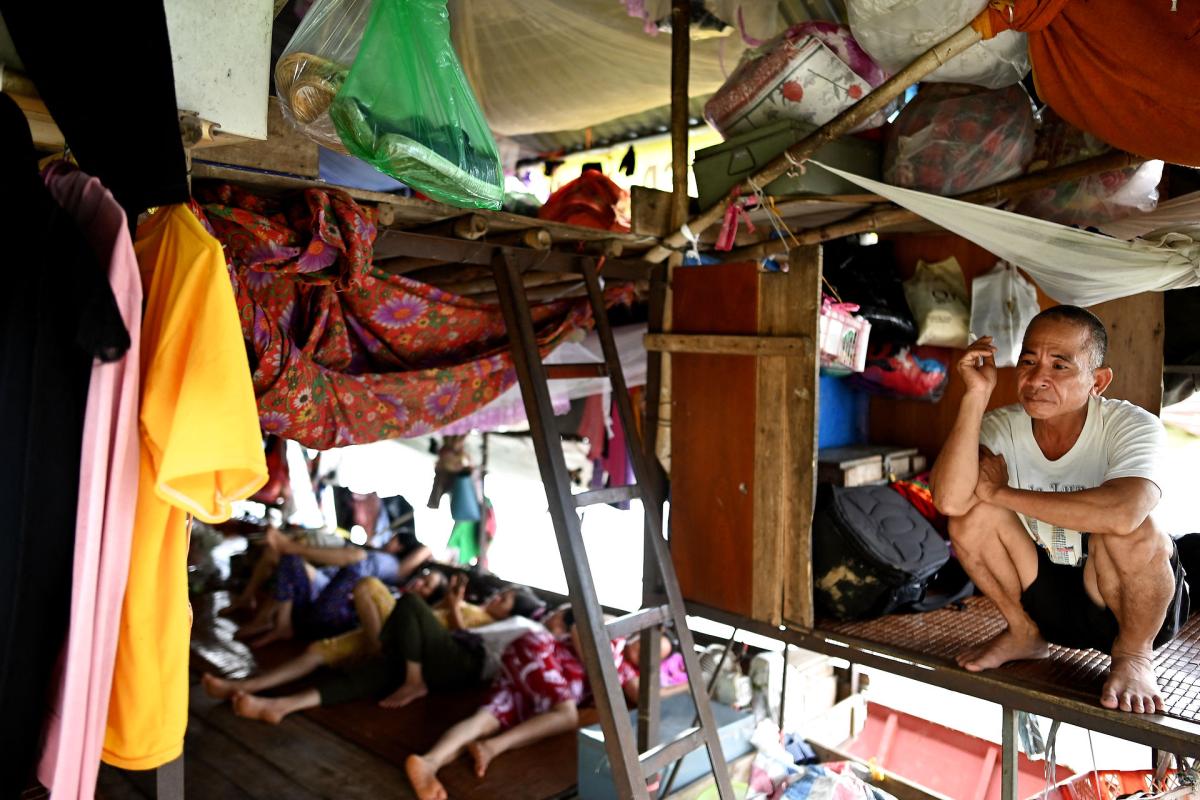
What makes a climate migrant?
In Thua Thien Hue province in North Central Vietnam, mountains descend swiftly to the lowlands where rice paddies, dotted by towns and settlements, stretch to the shore. At the coast, an artificial sand dune looms, running parallel to the 128-kilometer-long shoreline. It was built to block the storms, stem the tides and protect the province from the typhoons that batter Vietnam’s coast every year. The winds and flooding can devastate coastal areas, driving people from their homes, upending livelihoods and costing lives.
In some places the sand dune peaks at a height of thirty metres. However, storms and erosion, increasingly linked to climate change, continue to eat away at the coastline. And local authorities continue to move those caught in their path. Some of these people, who live in small fishing villages along the coast, have found themselves trapped between an encroaching sea on one side and the sand dune on the other. Every year, the thin sliver of land they inhabit shrinks, and their futures within it erode with the sand.
One family lived in a small house less than a hundred metres from the receding shore. Danh, the father, explained that they had nowhere else to go. Like many other residents of these small fishing villages, they had few prospects. The fish catches had been declining for years, partly because of commercial fishing further off the coast. Their limited savings would not stretch far, and their future – well, he didn’t know. He recounted all of this with his young daughter beside him.
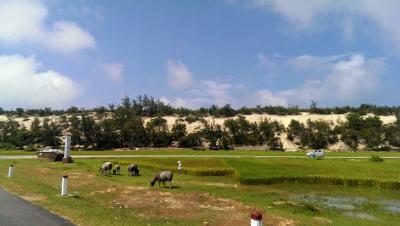
The provincial authorities were acutely aware of the problem, however, and had taken action. Since 2004 they had been moving entire villages consisting of hundreds of households and resettling them further inland. These resettlement programmes were imperfect. Sometimes infrastructure or utilities were delayed for months. Often the new settlements were still exposed to storms and floods. And while the programmes offered financial and in-kind support to rebuild, it wasn’t enough. Families lived in half-finished houses for years while saving up the cash to finish building them. It was difficult, but alternatives were limited.
But what is it that makes a climate migrant? Is moving a few hundred metres enough? And is the term ‘climate migrant’ even useful, or does it obscure more than it explains?
Danh and his family were slated to move to one of these new areas, less than a kilometre inland, as part of a mandatory resettlement programme. In those few hundred meters, their lives would intersect with headlines half a world away – headlines that speak of ‘climate migrants,’ ‘climate refugees’ or ‘climate displacement,’ warning of millions on the move, often in dire tones.
But what is it that makes a climate migrant? Is moving a few hundred metres enough? And is the term ‘climate migrant’ even useful, or does it obscure more than it explains? Danh’s story is in many ways one of the most clear-cut one could find, yet it shows that many kinds of movement are captured by the catch-all phrase ‘climate migrants.’ It shows that these headlines can become mere caricatures of complex realities. Such headlines, and the simplifications they spread, can hinder an informed response, one that is becoming increasingly urgent in the face of a changing climate.
There is certainly cause for concern. According to the International Displacement Monitoring Centre, which tracks global displacement in detail, some 24 million people were displaced by disasters every year from 2008 to 2018, a figure that represents new displacements that happen each year. And climate change is bringing with it several exacerbating factors: The number of disasters worldwide is on the rise. These disasters are becoming increasingly erratic in where and when they hit, making them difficult to prepare for. Moreover, many disasters, such as the typhoons experienced in much of Vietnam, are also becoming more intense.
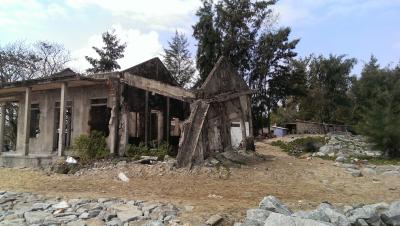
Add to this that climate change impacts are also pushing more people into poverty. The result is a vicious cycle in which many people are more affected by climate extremes, which can undermine their health, well-being or livelihoods, and they in turn become more vulnerable to future climate shocks and other stresses.
The headlines, however, often gloss over important dynamics. All too often they leave us with oversimplifications when in fact, with climate-related mobility, the key is in the complexity.
Many ways to move – if at all
‘The Great Climate Migration Has Begun’ proclaimed a recent exposé by the New York Times Magazine. In fact, there is no one great climate migration. Climate change is just one of many factors that influence people’s movement. In some cases, it may prompt new forms of movement, such as specific climate-related resettlements like that of Danh and his family. But in many other cases it will be one of many factors that play into ongoing considerations over whether to move, stay, or various configurations of these.
Throughout history, movement has been a common aspect of life across the globe
Throughout history, movement has been a common aspect of life across the globe, and this continues to be the case today. We move for work, education or family reasons. Movement can also be linked to changing political, economic or environmental situations, often in combination. The resettlement of Danh’s village, for instance, was not just a response to climate change. Certainly, many coastal households were increasingly at risk due to sea level rise and increasingly powerful storms. But at the same time, incomes in these fishing villages were falling due to declining fish catches, partly a result of offshore commercial fishing. Many households had become trapped in a situation in which they lacked the financial means to move. Ultimately, a government policy provided some support for climate-related resettlement. In this case, a range of environmental, economic and political factors came together to shape mobility for thousands of coastal residents through resettlement programmes.
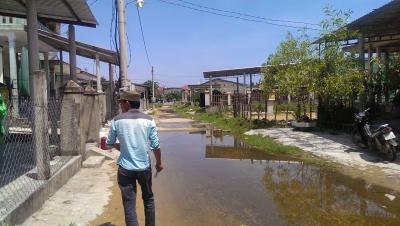
Also important, but often overlooked in public debates, are households’ and individuals’ perceptions, preferences and ability to move. Some coastal households targeted by the resettlement programmes, for instance, were reluctant to move, despite the encroaching shoreline, while others were eager to do so. Some wanted to build a new house in the resettlement area while keeping the old one for as long as possible. These reflect very real differences in individuals’ and households’ preferences and how they perceive and respond to risk, which translate into diverse responses to climate-related challenges.
Households’ preferences can also be enabled or constrained by political or legal contexts. In Vietnam, mobile individuals or households may lose access to government services such as education and healthcare because such services are tied to the municipality where a person is registered as a resident, and registration in a new municipality can be difficult. In many contexts, movement is also politicized or shaped by restrictive policies, especially international movements.
Where climate-related mobility is concerned, therefore, many movements do not take the form of the one-off, long-distance journeys that tales of climate migrants evoke
Where climate-related mobility is concerned, therefore, many movements do not take the form of the one-off, long-distance journeys that tales of climate migrants evoke – just think of Danh and his family, one of hundreds of households that moved under a kilometre. For migration generally, long-distance international journeys are the exception, while in-country journeys the norm. The big picture is one of around a billion migrants, or people moving from their place of origin, in the world today, with the vast majority moving within their own home countries. In 2019 there were only 272 million international migrants, and most of them travelled to neighbouring countries. While some migrants travel further afield, these are clearly the minority. These numbers are for all migration, not just climate-related mobility. They mark a sharp contrast to reports and projections of many millions of people moving over long distances because of climate change.
It is not just the numbers that are misleading: the types of movement people engage in are extremely oversimplified. Looking at in-country movements specifically, there are multiple spectrums of movement, such as forced to voluntary, short-term to long term, nearby to far off. And these can overlap in complex ways. In-country climate-related mobility can include short-term displacements due to flooding, a form of forced mobility; a rural household temporarily sending one of its members to the city to find work, providing a new source of income less affected by climate change; or entire households relocating permanently, for instance, to avoid recurrent flooding or droughts. Many of these types of mobility are seen in rich and poor countries alike.
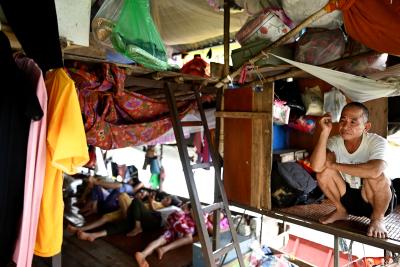
Mobility practices are also tightly linked to a range of social and economic factors. Some families or individuals may be more open or able to move than others. This may reflect their aspirations for the future or their ability to draw on migration networks. Knowing others who have moved and being able to draw on their experience and facilitation makes movement more likely. Having the financial means to move is also essential. Immobility, or trapped populations, is often overlooked in public and policy debates, but it can occur when a household or individual lacks the means to move and start over somewhere else, as was the case for Danh and his family prior to the relocation programme.
These many aspects of mobility can relate to climate change in a variety of ways. Often the bottom line is making a living and providing for one’s family. If unpredictable rainfall or drought makes agricultural livelihoods untenable, rural families look for other ways of supporting themselves. This often entails diversifying livelihoods, for instance, by engaging in wage labour in a nearby town, sending a household member to a larger city or industrial area to work, or supporting further education for household members that could lead to other forms of employment. In many such situations, the mobility of some household members is part of a strategy to support those who stay behind. Mobility and immobility are thus often linked, an important but often overlooked dynamic.
Putting a finger on climate change
In Thua Thien Hue Province, a single powerful typhoon can remove a hundred metres of shore. This placed Danh and his family just one strong storm away from homelessness. But even here, there were households that would rather stay, with a range of factors influencing their decisions and preferences. This goes to show that it is not just environmental change that is important in decisions to move. It is therefore difficult to put a finger on how exactly climate change affects mobility.
Over many years of increasing temperatures, when is it exactly that the weather becomes hot enough for some people to up and move?
This is especially true of slow onset climate change – those kinds of changes that occur over longer periods of time, like decreasing rainfall, increasing temperatures, sea-level rise or more erratic weather patterns. With sudden onset events, such as floods or storms, the relationship between climate change and people’s movement is generally clearer, but with slow onset events this is not the case. Over many years of increasing temperatures, when is it exactly that the weather becomes hot enough for some people to up and move?
Researchers have been able to find one central factor that provides a window into the role of slow-onset climate change – livelihoods. People who have moved might not point directly to slow-onset climate change as a factor in their decision, but they will often describe the impacts on their livelihoods. This is especially true of the rural poor, whose livelihoods are highly dependent on natural resources and the environment. And four out of five of the world’s poor live in rural areas.
Across the world, people are telling of the rains and the crops failing, or of the seasons shifting, making it difficult to plant at the right time, or the heat killing off their livestock. In Thua Thien Hue, they recount how salt water is pushing further and further into the river system during the dry season, damaging the rice paddies as it goes. When changes like this become severe enough that livelihoods become untenable, people will try to find new ways of making a living and supporting their families. Sometimes, this might contribute to a decision to move.
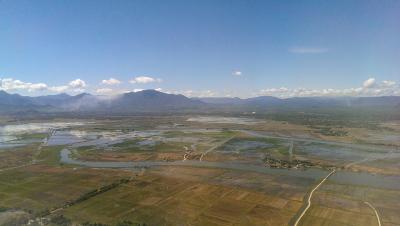
Mediating factors and missing links
There are two farming districts, one using irrigation, with fresh water running directly to the fields, the other lacking irrigation and relying instead on rainfall, which is becoming increasingly erratic due to climate change. In each district, farmers rely on their harvest to feed themselves and their families, and they have little surplus or savings. Then a drought comes. The farmers in the irrigated area are able to manage, while those without irrigation leave to look for work elsewhere. Was it the drought or the lack of infrastructure that prompted their movement?
Public and policy debates are dominated by the narrative that climate change leads directly to people moving. Yet, in the span of a few sentences, it becomes clear that movement in climate change-affected areas is closely related to factors other than climate. In Thua Thien Hue Province, irrigation and water-management infrastructure are a major focus of climate change adaptation efforts and investments. Major dams have been constructed throughout the river system, including one at the mouth of the Perfume River that blocks saltwater from entering during the dry season. This dam is directly responsible for preventing saltwater incursion into hundreds of hectares of farmland close to the coast. In other words, it allows many households to retain their existing livelihoods when they would otherwise need to find alternatives, perhaps involving various forms of mobility.
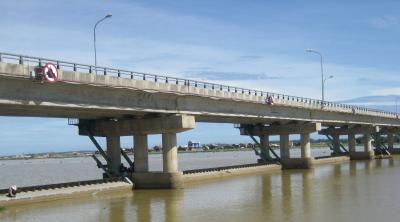
Researchers even shy away from the term ‘natural disasters’ because these human interventions are so significant for outcomes – often disasters aren’t so ‘natural’ after all
Indeed, mediating factors – everything from historical development efforts to current state programmes to social dynamics – provide the contexts in which climate change impacts. They shape how an area is affected by climate change and in turn how individuals and households experience it. Because of such factors, the same climate-change impacts can have wildly different implications depending on where one lives.
This is an accepted reality in studies of natural disasters. When disasters hit, the destruction they leave behind is often more dependent on local development, infrastructure and institutions than the actual extreme weather event. Dams, dykes, early warning systems and disaster preparedness and response all make a huge difference in saving lives, homes and livelihoods. Researchers even shy away from the term ‘natural disasters’ because these human interventions are so significant for outcomes – often disasters aren’t so ‘natural’ after all.
This is also what makes climate-related mobility so difficult to study. Going back to slow-onset changes, many actions can be taken to reduce their impact. This includes efforts to adapt to climate change; increasing levels of socio-economic development, for example, through targeted development projects; diversifying livelihoods to establish new sources of income; infrastructure capable, for instance, of providing coastal protection, better drainage, or improved access to water resources; or social services and social protection, such as food assistance, that could help families manage short-term shocks, thereby enabling them to plan and invest for the long term.
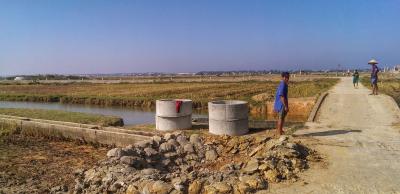
In the area where Danh lived, some coastal protection infrastructure had already been built to reduce erosion; mangrove forestation projects were underway to protect the coastline and provide new livelihoods in the area; and government officials were interested in building a dyke along the shore, but were unable to do so because of the high cost. Besides these coastal protection measures, a range of other initiatives were taken to support local livelihoods and development. Such measures can have a significant impact on how and to what extent climate change affects people’s lives and livelihoods.
In other words, many of the factors prompting forced immobility, migration or displacement can be addressed. They are simultaneously choices of policy, programming and implementation, practices of social relations and norms, and conditions of political and economic access or exclusion
Disregarding the many factors that shape how people and communities are affected by climate change has clear pitfalls: focusing only on the environmental impacts of climate change would mean looking only at drought, for instance, and overlooking other important factors that could play a role in people’s decisions to move. This hides the fact that much can be done to address climate change impacts. In other words, many of the factors prompting forced immobility, migration or displacement can be addressed. They are simultaneously choices of policy, programming and implementation, practices of social relations and norms, and conditions of political and economic access or exclusion.
In short, these factors represent choices that can be made, and also changed. If there is no irrigation, it can be built. If some marginalized households lack access to it, inclusive political processes can be fostered to ensure equal access. And if there is a lack of local capacity to manage the infrastructure itself or decision-making around it, the capacity of local governments and organizations can be bolstered. This is not to say that such choices are easy to make or to implement. Often existing interests have shaped the status quo. And even once a decision for change is made, designing and implementing policies and programmes is challenging, can have unintended outcomes and can fall short of the desired results. Despite this, by recognizing that climate migration not a given, the scope of responses and possible solutions is broadened considerably.
Understanding climate-related mobility
Climate change will undoubtedly have an impact on the existing status quo – of movement as a typical part of life across the globe. Livelihoods, education, relationships, opportunities and development are not static, and neither are people. In some research and policy debates, climate-related mobility was initially considered a failure to adapt to climate change. People were seen as sedentary in nature, and any deviation from this was an aberration. This perspective underpins discourses of ‘climate refugees,’ depicted as desperate wanderers devoid of agency, shunted around by human-induced climate change.
But movement is the norm for many and has long been used as a response to environmental change. In relation to intensifying climate change, it is increasingly recognized that mobility can be a valuable tool for coping or adapting. For Danh and many other families in coastal Vietnam, climate-related resettlement helped reduce the very real risks they faced due sea level rise and coastal erosion. Yet this too gives only a partial picture of complex realities. Is a proactive decision to move in the face of climate-related challenges voluntary or forced? What other factors play a role in decisions to move, and to what extent?
I do not know what resettlement brought for Danh, his daughter and their family – if they were able to continue fishing, or had to find new livelihood opportunities; if they were able to build a proper house with their small savings and the support provided, or had to make do in a makeshift structure while they tried to save up; if they had adequate services, or lacked running water or electricity for a period. Their experience can help us understand the complexity of climate-related mobility. But it also shows that climate migration, displacement, immobility or resettlement is by no means the end of the story.
The fieldwork this longread draws on was conducted in 2015 as part of Lily Salloum Lindegaard’s PhD research. DIIS research on climate change, migration and governance continues through the Governing Climate Mobility research programme, which examines climate-related mobility in Ethiopia and Ghana.

